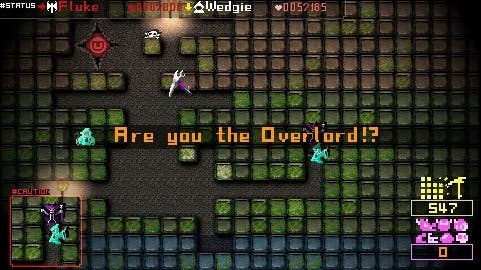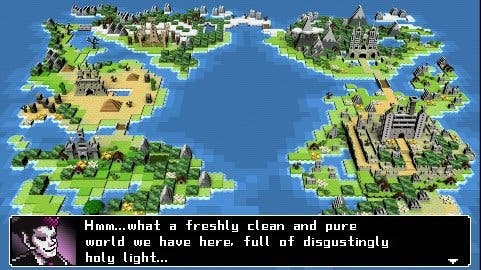What Did I Do To Deserve This, My Lord!? 2
Dig for victory.
Hurrah for Nippon Ichi. Not only do they tirelessly serve the needs of niche enthusiasts with games like Disgaea, but they understand the cathartic value of letting you play the bad guys once in a while. Much like the Disgaea series, in fact, both "What Did I Do To Deserve This, My Lord!? 2" and its Batman-rankling predecessor put you in the shoes of a divine evil - sallying forth against the sickeningly puritanical forces of goodness and light, turning the traditional RPG hit-tables with a healthy splash of comedy villainy.
We'll be calling them the "Lord" games, by the way, for obvious reasons.
In both Lord games, players take the role of the God of Destruction, via the medium of a disembodied pickaxe. Summoned by the camply comedic dungeon master Badman, it's your job to mine an evil lair from the magical loam and bedrock below a typical fantasy JRPG kingdom, constructing a labyrinth of sufficient terror and complexity to confound the aims of the occasional visiting hero.
It's not a new concept - games like Dungeon Keeper and Evil Genius have dipped their toes in this sort of criminal housing project before. But whereas those games gave you direct control of what went where and how it should behave, Lord scales back the interaction to that single pickaxe - cutting away squares of earth to craft the rooms and corridors of your lair, but leaving monsters to their own devices.
Of course, it's not as simple as all that. Monsters aren't purchased or placed, instead they're encouraged to settle and multiply through the manipulation of an increasingly complex food chain, beginning with basic resource-grazers and terminating in dragons and powerful beasts summoned from the gates of the netherworld.

The conveniently squared areas of dungeon real estate contain nutrients, released as creatures when the blocks are destroyed with your pickaxe. The basic level of nutrients will give rise to a slimemoss, a mindless and weak blob that will blindly absorb nutrients from the surrounding area and redistribute them, if correctly herded, into more concentrated patches.
Because they're simple beasts, they only take turns when presented with a dead end, so they can be easily contained in T, O or H-shaped areas, gradually sucking up monster fuel and depositing it again. When their constantly-depleting vitality wanes, they'll take root in the form of a flower, gaining new properties and sucking up nutrients from a wider area before giving birth to a litter of new mosses when they die. Thusly do the lowly orders multiply, and left to their own devices they continue to do so.

Once these lowly ruminants have done their job, the whole process begins to open out a little. As the concentration of nutrients builds, new and more powerful creatures emerge from broken rocks, feeding on the creatures beneath them. They won't do any of the nutrient-hauling monkey-work, however, so you'll need to maintain a balance between the slimemosses and the higher-ups.
Once the third tier of creatures is introduced, balancing becomes harder. Introduce magical nutriments, giving rise to a whole new tree of monsters, and you start to see what a balancing act it can become, especially when you consider that you have precious few minutes to prepare your dungeon before the heroes come knocking.

